Consider these website visitor tracking tools and get a better understanding of your customer journeys and marketing performance.
If you want to understand how users find your site and convert into leads, then website visitor tracking tools are the best way to go.
By monitoring and measuring the movements of specific visitors, you can gain better insights into what pages and marketing sources are most valuable in driving traffic and leads.
However, choosing the right website visitor tracking tool can get a little tricky as they all provide different benefits, features and varying price ranges.
There are so many great options out there, and it’s a tall task to know what’s right for your business.
To help you decide, we’ve put together a list of website visitor tracking tools we think will best serve your needs.
In this article, we’ll discuss:
Top three tools for tracking visitors
We’ve grouped website visitor tracking software into three segments: visitor identification, behavioral tracking, and website analytics. Below are our top choices from each category.
Ruler Analytics – Forgive us for putting ourselves on top of the list, but there are valid reasons for doing so. Ruler tracks each visitor from their first interaction to conversion. When a visitor converts, their marketing source and conversion details are sent to your CRM. After closing a lead, Ruler uses different models to attribute revenue to various touchpoints.
HotJar – Through heatmaps and session recordings, Hotjar provides a visual representation of how visitors navigate and engage with a website, enabling businesses to optimise their online presence for better user experience and conversion rates.
Google Analytics – allows website owners to monitor and analyse user interactions, providing valuable insights into visitor behavior, preferences, and engagement on their websites.
Website visitor tracking tools allow you to see who is on your website and what they’re doing.
The best website visitor tracking tools let you follow individual users, track visitor journeys, and better understand your leads and customers.
Related: Complete guide to visitor level tracking
Most commonly, website visitor tracking software works by installing a script on your website.
It’ll collect key information on your visitors, such as what marketing channels they used to find you, what pages they looked at and what actions they took on your website.
💡 Pro tip: Want a step by step guide on how to actually track your website visitors? Read our complete guide to website visitor tracking. It’ll walk you through how you can better identify your website visitors and the content they engage with.
Despite the upfront cost of website visitor tracking tools, they’re designed to save you money and increase the ROI of your campaigns long term. Generally, website visitor tracking means different things to different people, but we’ve categorised them into two broad types for the purpose of this article.
Website visitor tracking tools vary, and there’s no universal solution. The choice depends on your specific business goals and objectives, which we’ll explore next.
The tools in this category help you track anonymous visitors on your website on an individual level, from initial engagement to conversion.
The most advanced visitor identification tools track what anonymous visitors do on your website, connecting their actions to specific touchpoints. When a visitor converts, like filling out a form, these tools link that lead to their previous touchpoints. They seamlessly integrate with CRM systems, giving a full view of each lead and customer.
By recording interactions pre and post-conversions, you can map the customer journey, attribute conversions and revenue to specific channels, and reallocate budgets to grow ROI. Let’s dive into our list.
You didn’t expect us to write about visitor level tracking tools and not mention our product, did you? Ruler Analytics is an easy-to-use visitor-level marketing attribution tool that enables businesses to get the full picture of their customer journeys.
Related: How to view full customer journeys with Ruler
It works by tracking each and every visitor over multiple sessions, traffic sources, keywords and more. When a visitor converts into a lead, their information is sent to the Ruler database and matched with their marketing touchpoints to create a customer journey.
Once Ruler has made the connection, the marketing source data and conversion details are sent to your CRM. When a lead converts, the revenue data is sent back to Ruler, allowing you to accurately calculate ROI and other bottom-line metrics.
Related: How Ruler attributes revenue to your marketing
Our tool includes many features that help you dig into and better understand your customer journeys, from awareness to acquisition.
Pricing for Ruler starts at £199 a month, with plans based on features and number of website visitors. You can save 20% by paying annually and there are special rates for agency partners.
💡 Pro tip: Want to better understand your website visitors and measure the performance of your marketing campaigns more effectively? Book a demo of Ruler and see how it works for yourself.
Much like Ruler, Attribution is a platform designed to unravel the complexity of attribution and customer journey tracking. By providing insights into the contribution of each touchpoint to the conversion process, Attribution empowers businesses to allocate resources effectively and optimise their marketing strategies.
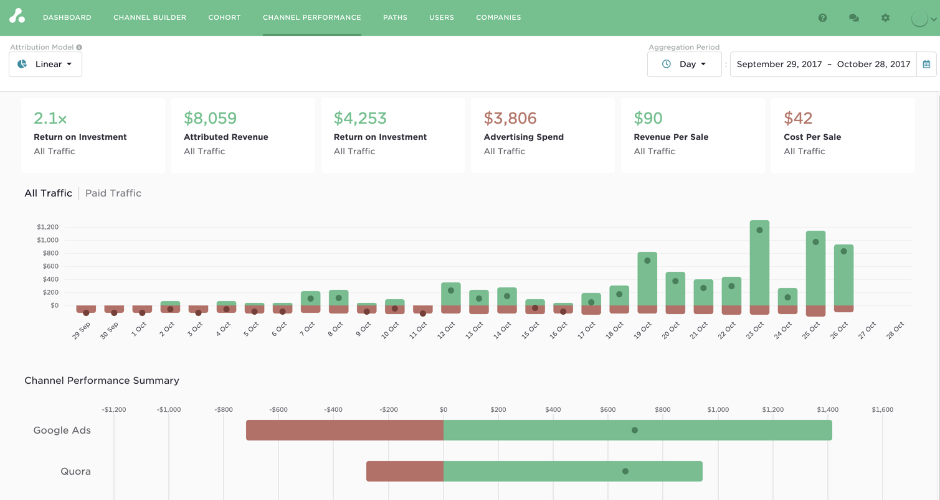
Key Features:
Attributionapp doesn’t have a set price; you can request pricing details by scheduling a demo, and they will provide a quote based on your business needs.
CallRail specialises in call tracking and analytics, allowing businesses to attribute phone calls to specific marketing channels. With detailed call analytics, CallRail helps businesses optimise their marketing strategies for enhanced customer engagement and conversions.
Related: Ruler Analytics vs CallRail: What’s the difference?
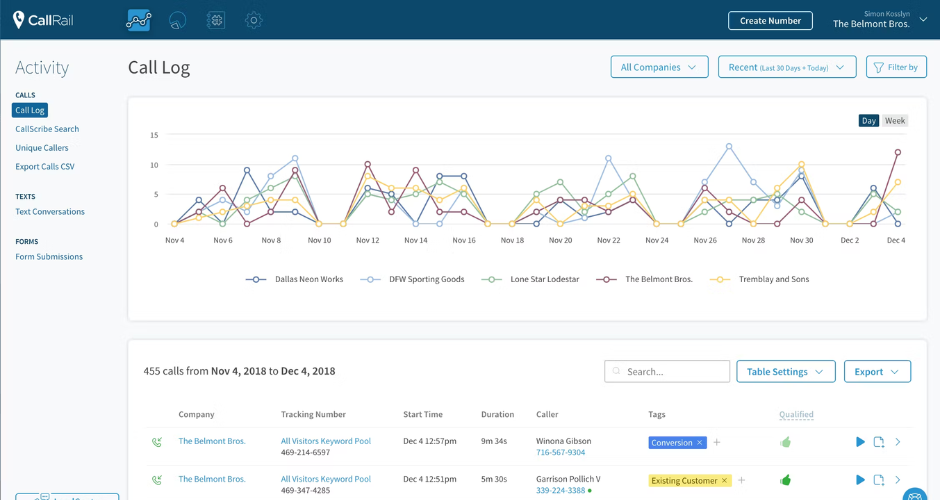
Key Features:
CallRail’s pricing starts at $45 per month for their basic call tracking plan.
CANDDi is a comprehensive behavioural tracking tool that goes beyond traditional analytics. It provides detailed insights into individual visitor behaviour, helping businesses identify high-value prospects and personalise their marketing approach.
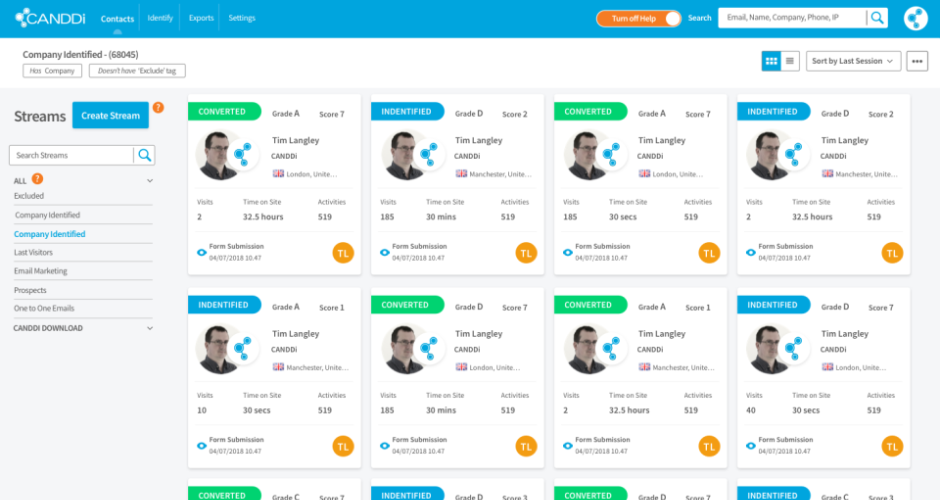
Key Features:
CANDDi’s website visitor tracking starts at $249/month for basic features and 1,000 unique visitors, with advanced options and higher limits scaling up in price.
Leadfeeder focuses on turning website visitors into sales leads by providing detailed information about companies visiting your site. With its advanced analytics, Leadfeeder equips businesses with the data needed to identify potential customers and streamline their sales processes.
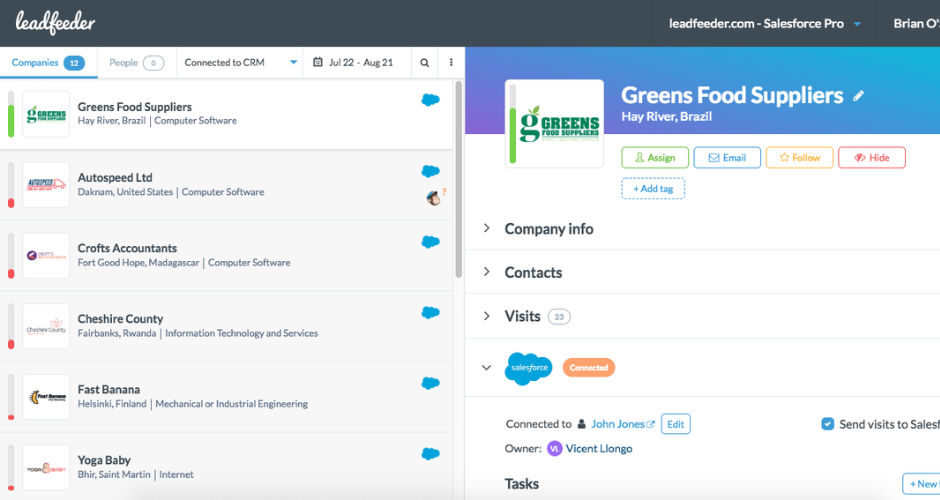
Key Features:
Leadfeeder starts at €139/month for unlimited visits, data storage, and users, with a free plan offering access to limited data for 7 days.
Now, let’s move on with behavioural tracking tools. With behavioural tracking, you can gain valuable insights into user interactions, preferences, and patterns across your website, allowing you to enhance user experiences, optimise landing pages, and make informed decisions to improve overall engagement and satisfaction. Here’s our top picks for behavioural tracking tools:
Crazy Egg has established itself as a powerhouse in the realm of website analytics and behavioural tracking. Renowned for its intuitive heatmap reports, Crazy Egg provides a visual representation of where users click, scroll, and spend their time on your website.
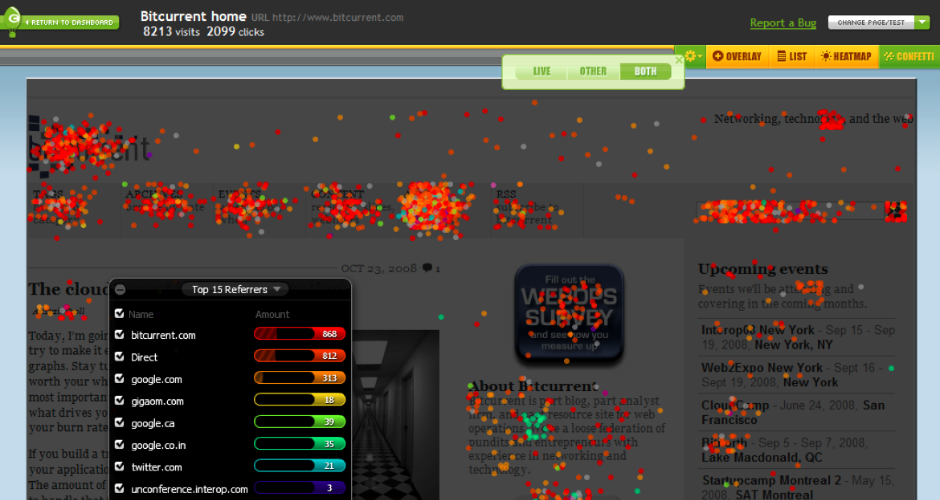
Key Features:
Crazy Egg offers a tiered pricing structure based on pageviews. Their most affordable plan, Basic, starts at $29 per month for up to 3,000 pageviews. More advanced features and higher pageview allowances become available with higher tiers, reaching $249 per month for the Pro plan and custom pricing for Enterprise-level needs.
Hotjar is another formidable contender, offering a suite of tools designed to visualise user behaviour and feedback. From heatmaps to feedback polls, Hotjar empowers businesses to optimise their website based on genuine user insights.
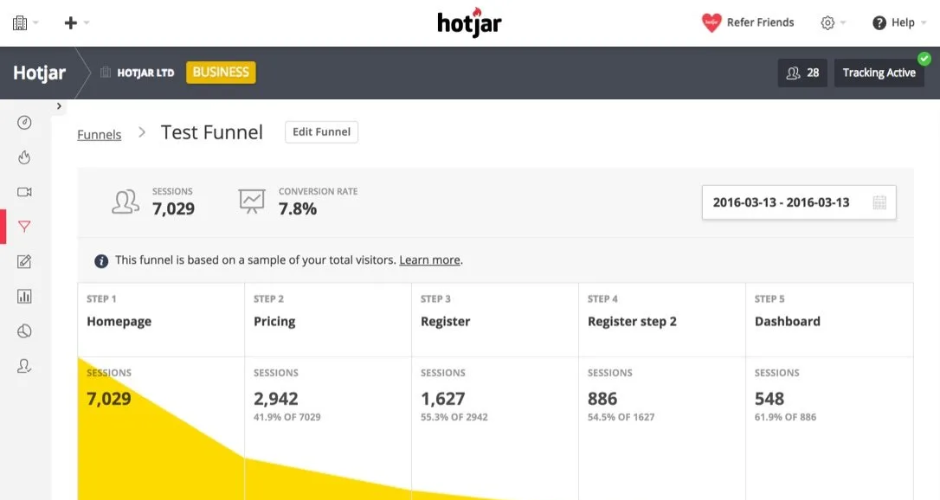
Key Features:
Hotjar stands out for its free plan, perfect for small businesses with under 2,000 daily pageviews. If you see more traffic, their paid plans start at $39 a month for additional features like recordings and funnels.
Inspectlet offers a comprehensive suite of tools tailored to provide granular insights into user behaviour. With its session recording capabilities and heatmap visualisations, Inspectlet equips businesses with the data required to refine their digital strategies effectively.
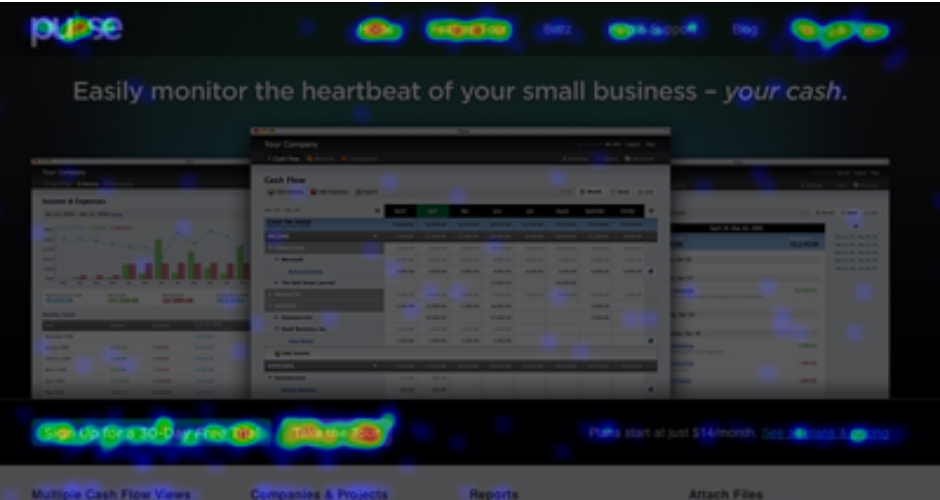
Key Features:
Similar to Hotjar, Inspectlet has a free tier with limited features for up to 1,000 sessions per month. Their paid plans are competitively priced, starting at $49 for the Personal plan and $99 for The Pro plan, ideal for growing businesses. They also offer custom plans for larger organisations.
Mouseflow stands out as a robust behavioural tracking tool, offering a plethora of features designed to illuminate user interactions and website performance. With its comprehensive analytics dashboard and real-time insights, Mouseflow enables businesses to enhance user experience and drive conversions.
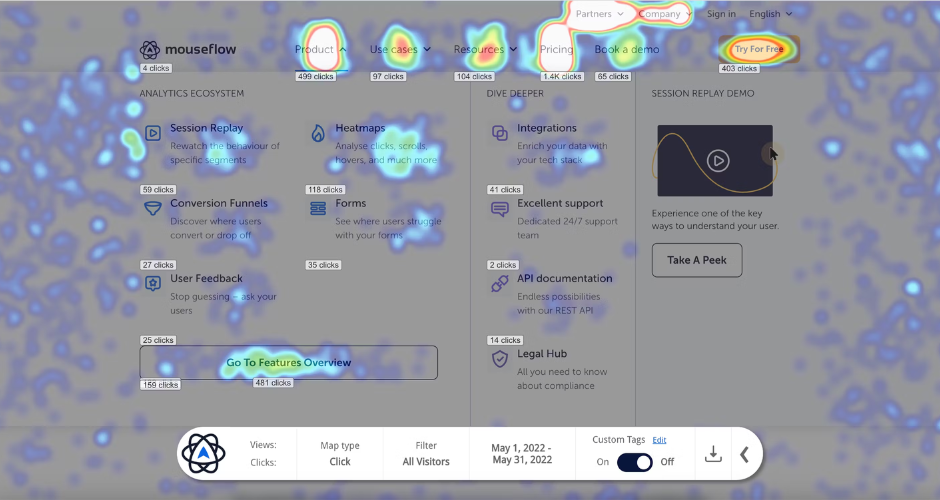
Key Features:
Mouseflow’s Starter plan starts at a budget-friendly $29 a month, allowing for 1,000 recordings. The Standard and Premium plans at $49 and $99 respectively, offering features like session filters and advanced funnels. As with the others, they have an Enterprise plan for high-volume usage.
Smartlook is a powerful behavioural analytics tool that enables businesses to understand user behaviour by providing session recordings, heatmaps, and conversion funnels. With its user-friendly interface, Smartlook is designed to help businesses uncover insights and make data-driven decisions.
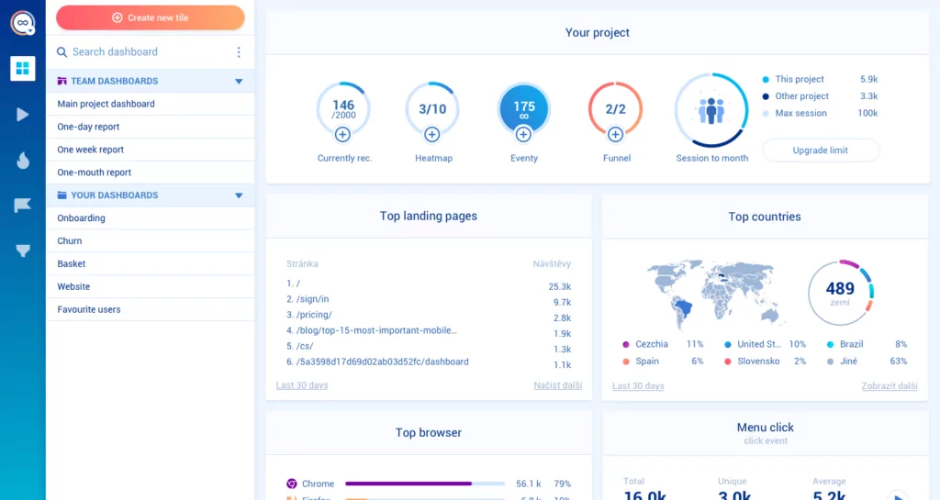
Key Features:
Moving on to website analytics, these tools offer an overview of your site’s traffic, tracking metrics including sessions, bounce rate, and time on page. While they lack advanced features, like session recording and customer journey tracking, they can provide reports and dashboards to analyse website visitors and their interactions. Here’s a few tools to get you started:
Fathom takes a minimalist approach to website analytics with a clean and user-friendly interface. Its simplicity doesn’t compromise functionality; instead, it focuses on providing essential insights while respecting user privacy.
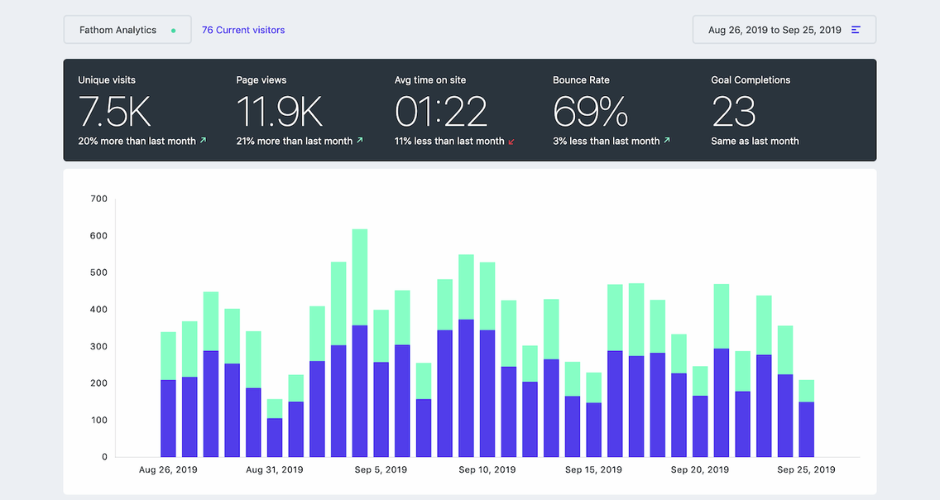
Key Features:
Fathom has a flat monthly fee based on monthly active users and a generous free tier for low traffic websites.
Funnel.io specialises in marketing analytics, offering a unified platform for data integration and analysis. By consolidating data from various marketing channels, Funnel.io equips businesses with the insights needed to understand the complete customer journey.
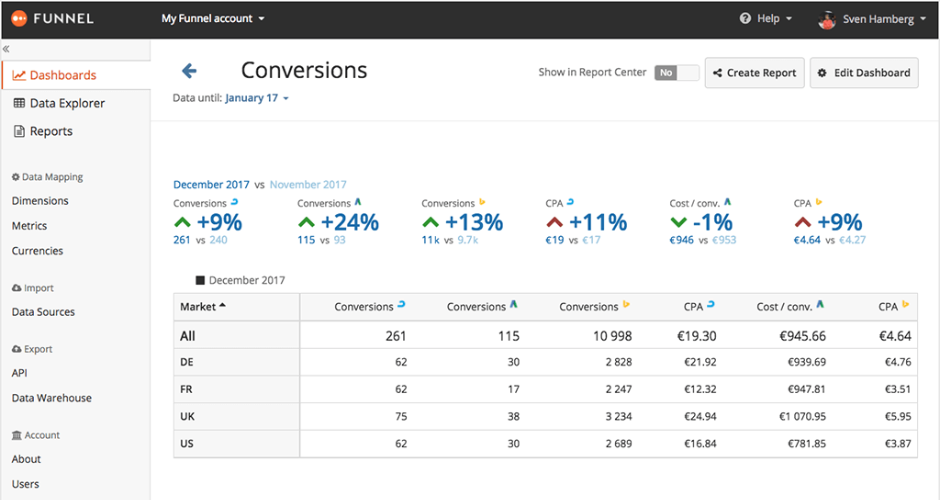
Key Features:
Paid plans for Funnel.io start at $99/month with different tiers based on features and number of funnels.
Google Analytics stands as a cornerstone in the field of website analytics. Its comprehensive suite of features empowers businesses of all sizes to track and analyse various aspects of their online presence. From audience demographics to detailed traffic sources, Google Analytics offers a wealth of information crucial for optimising marketing strategies and website content.
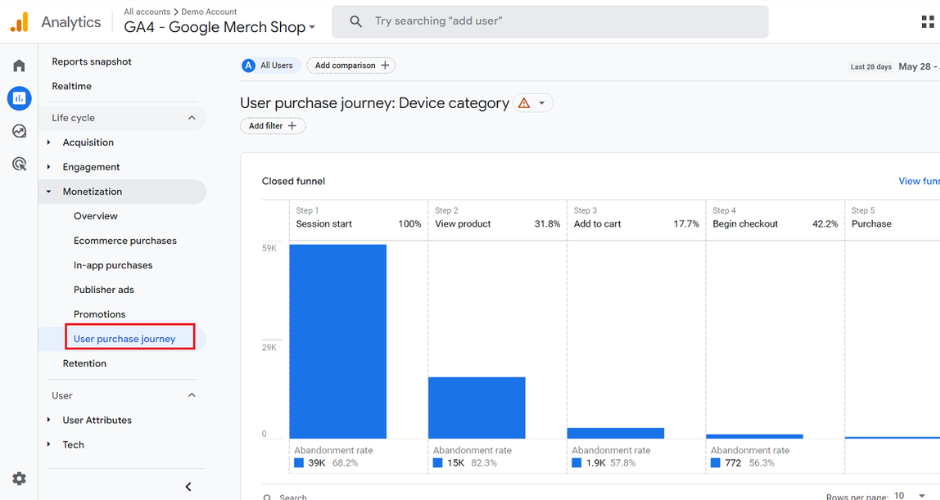
Key Features:
Google Analytics is free for most websites, with premium options for larger businesses needing advanced features and data processing power.
Matomo distinguishes itself as an open-source alternative that prioritises user privacy. Offering similar functionalities to traditional analytics tools, Matomo empowers businesses to maintain control over their data while gaining valuable insights into user behaviour.
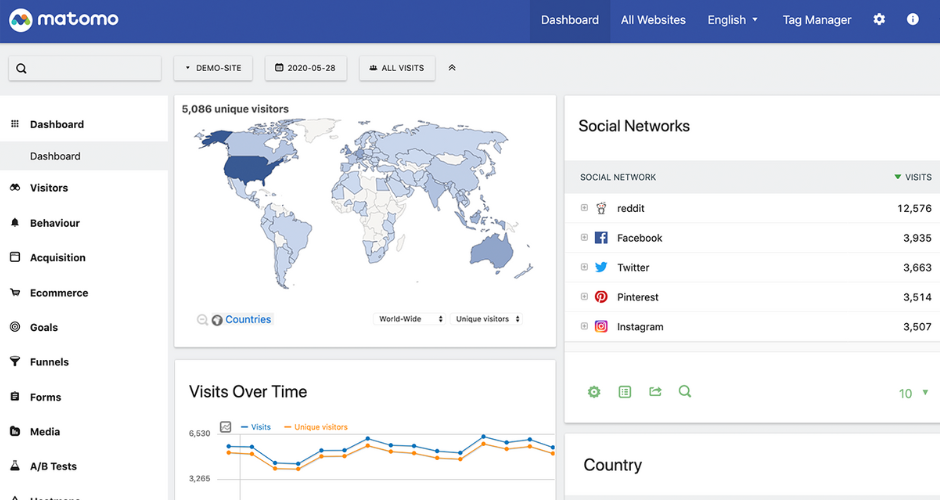
Key Features:
Matomo is an open-source alternative to Google Analytics, and has a one-time fee for self-hosted versions, or subscription pricing for cloud-hosted options.
Mixpanel is a powerful product analytics tool that places a strong emphasis on user-centric data. By tracking specific user interactions and engagement, Mixpanel enables businesses to optimise their products and services for enhanced user satisfaction.
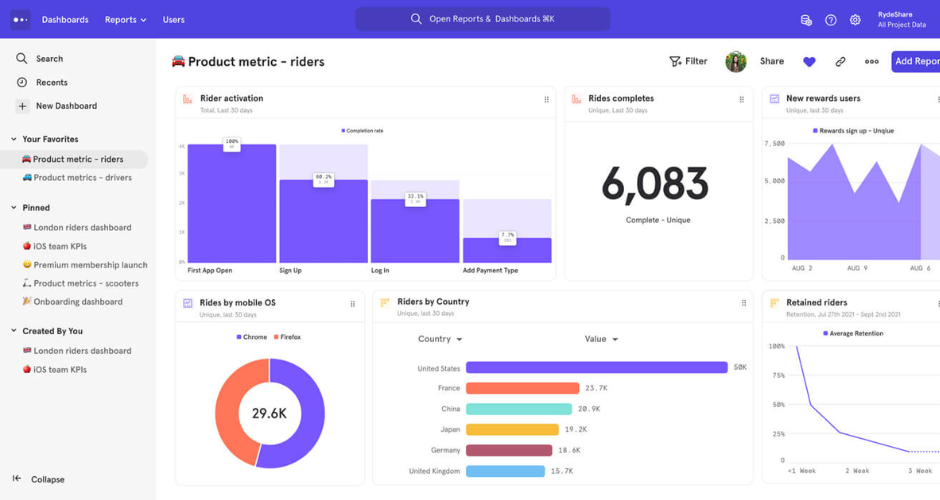
Key Features:
Mixpanel charges based on the number of user interactions tracked on your website or app, following an event-based pricing model. Small businesses and startups can benefit from a freemium package that allows up to 20 million events per month.
Choosing the right website visitor tracking tool can feel like a feat if you don’t know what you’re looking for. But, we hope the tools above have inspired you and provided a good jumping-off point.
Most tools in this list are focused on tracking the behaviour of your website visitors rather than building a picture of their customer journeys.
To get the most out of your marketing budget and drive business growth, your best bet is to stick with a tool that can track your user’s journey from awareness to close.
You’ll gain a holistic view of how well your campaigns perform and how they drive visitors to your website.
More importantly, you can see the movements and actions from page to page and track what happens to your visitors once they convert into a lead or sale.
Ruler makes the process of tracking your customer journey easy by measuring each visitor to your website across multiple sessions, alongside marketing variables such as source, channel, campaign and keywords.
You can learn more about Ruler and how it can track full customer journeys. Or, if you’d like to see Ruler in action, book a demo and see how its customer journey data can improve the quality of your reporting.
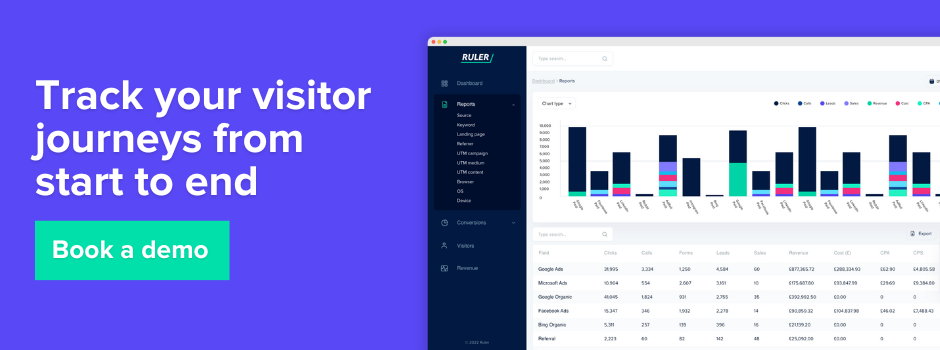
This article was originally published in September 2021 and last updated on 12th January 2024 for freshness.